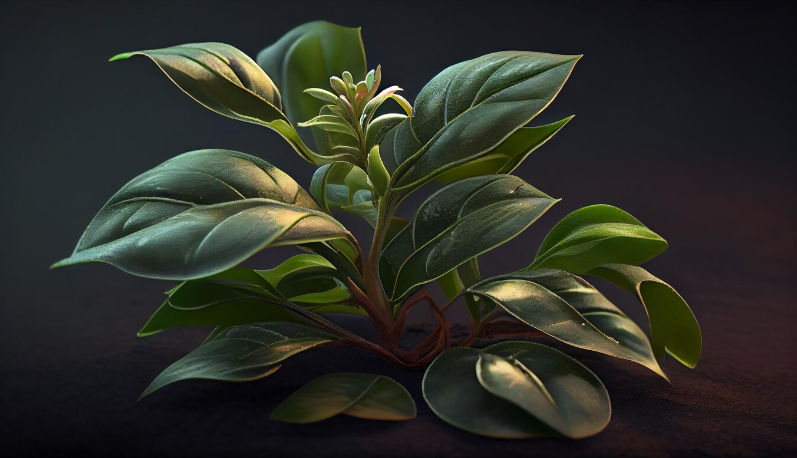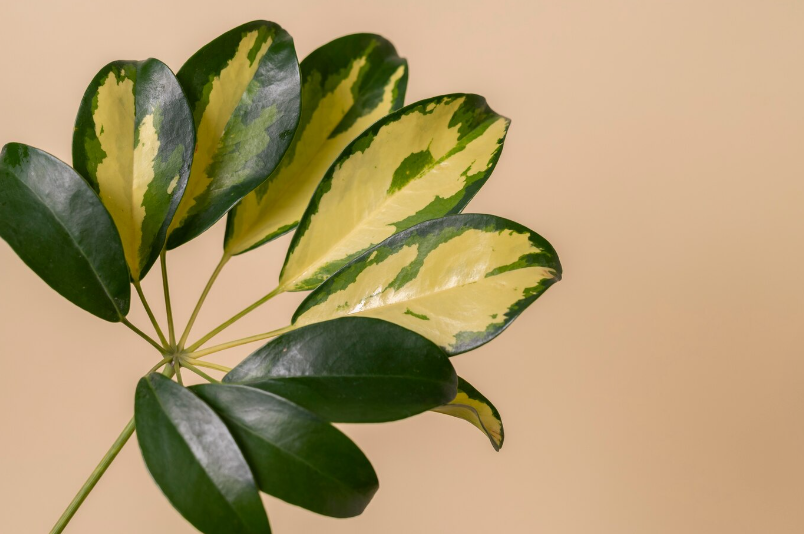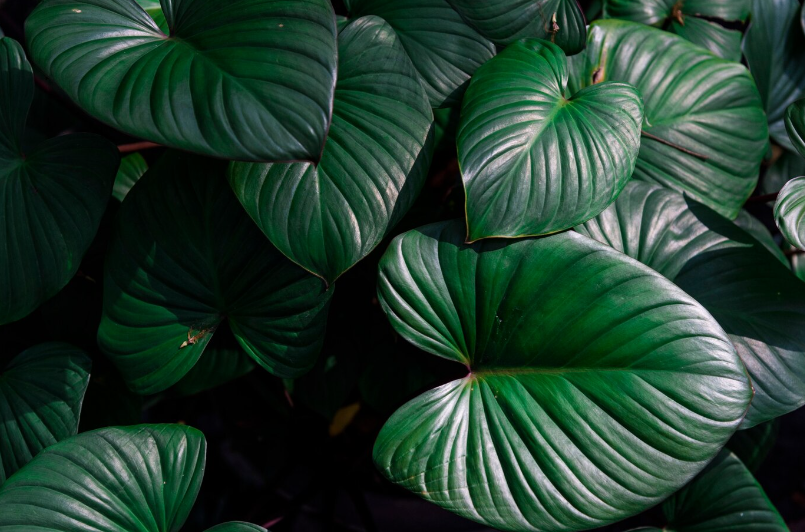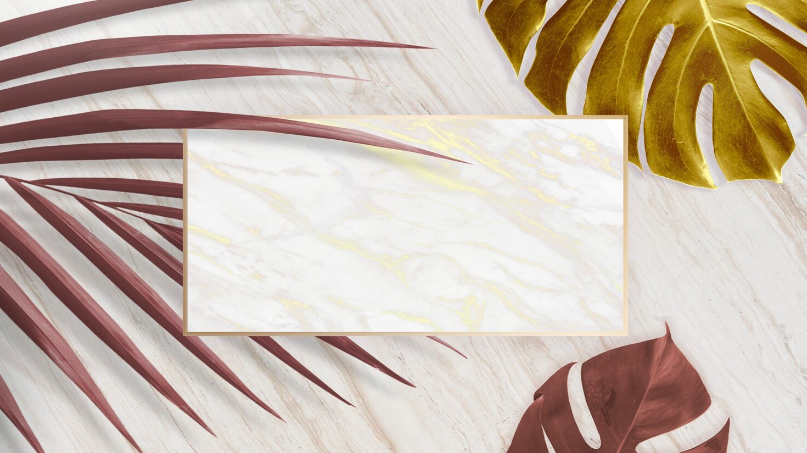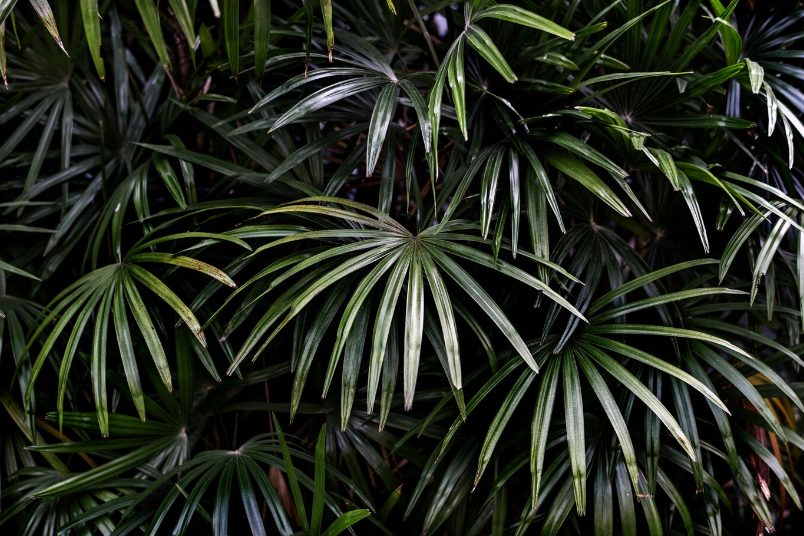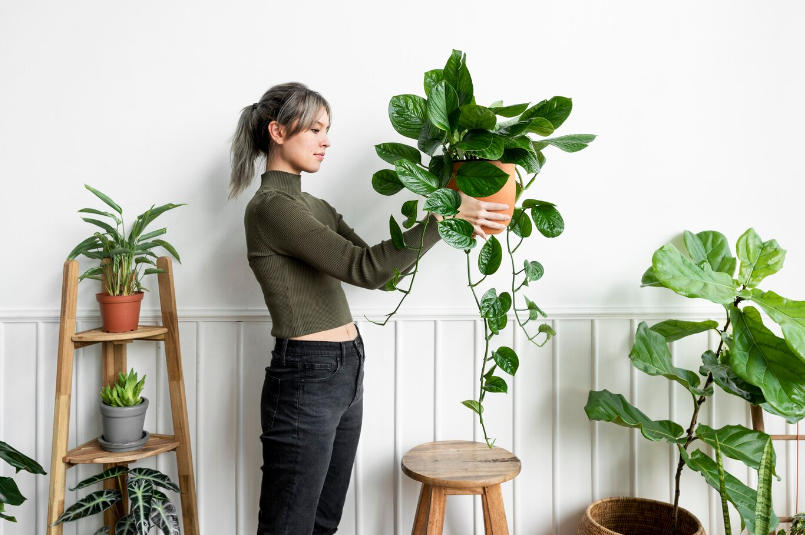Optimal Watering Practices for Split-Leaf and Cordatum Philodendrons
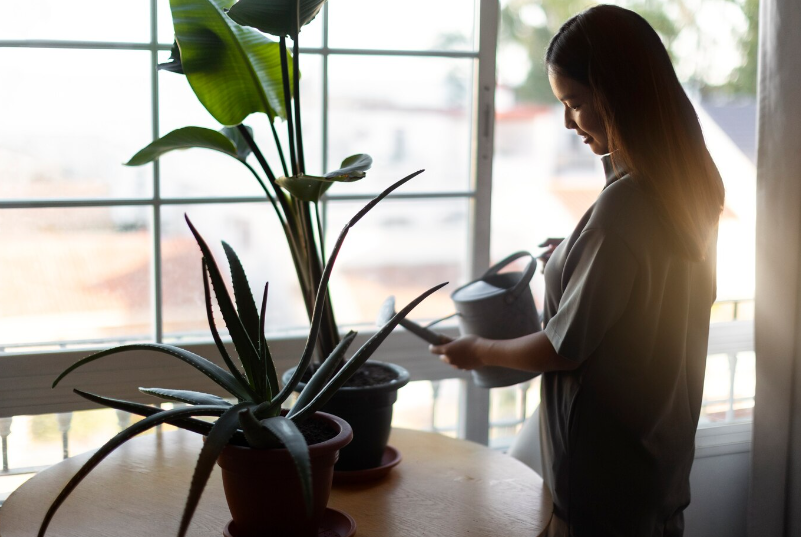
Watering is a crucial aspect of plant care, and when it comes to Split-Leaf and Cordatum Philodendrons, getting the watering just right is essential for their health and growth. These plants are known for their beautiful foliage and are popular in many households, but they can be finicky when it comes to moisture levels. To keep your Split-Leaf and Cordatum Philodendrons thriving, it is important to follow optimal watering practices.
Split-Leaf Philodendrons, also known as Monstera Deliciosa, have large leaves with unique splits and holes, while Cordatum Philodendrons have heart-shaped leaves. Both of these plants have similar watering needs, although there are slight differences to consider.
The key to watering these plants is to strike a balance between keeping the soil evenly moist without allowing it to become waterlogged. Overwatering can lead to root rot and other issues, while underwatering can cause the leaves to wilt and turn yellow.
One important factor to consider when watering Split-Leaf and Cordatum Philodendrons is the type of potting mix used. It is best to use a well-draining mix that allows excess water to escape, preventing water from pooling around the roots. Adding perlite or coarse sand to the soil can help improve drainage.
When it comes to watering frequency, it is important to let the top inch or so of soil dry out before watering again. Stick your finger into the soil to check for moisture levels. If the soil feels dry, it is time to water. If it still feels slightly moist, wait a few more days before watering.
One technique to ensure proper watering is to thoroughly drench the soil when watering, allowing excess water to drain out of the bottom of the pot. This helps flush out any accumulated salts or impurities and ensures that the roots receive adequate moisture.
However, be cautious not to let the plant sit in standing water, as this can lead to root rot. Empty the saucer or drainage tray after watering to avoid waterlogging.
During the winter months or in cooler climates, be mindful of reducing watering frequency as the plant goes into a dormant period. Plants require less water during these times, so adjust your watering schedule accordingly.
By following these optimal watering practices, you can ensure that your Split-Leaf and Cordatum Philodendrons thrive and continue to beautify your living space for years to come. Remember to observe your plants closely and adjust your watering technique accordingly, as each environment and plant is unique.
Establishing a Watering Routine
Establishing a regular watering routine is essential for the health and vitality of your split-leaf and cordatum philodendrons. These plants have specific watering needs that must be met in order to thrive. Follow these guidelines to create an optimal watering routine:
- Water your philodendrons regularly, but be cautious not to overwater. These plants prefer a moderate level of moisture, so it’s important to find the right balance.
- Check the soil moisture before watering. Stick your finger about an inch into the soil. If it feels dry, it’s time to water. If it’s still moist, wait a few more days before watering.
- When watering, make sure to thoroughly saturate the soil. Water until it starts to come out of the drainage holes at the bottom of the pot. This ensures that the entire root system is adequately hydrated.
- Allow the soil to dry out slightly between waterings. Philodendrons don’t like to sit in waterlogged soil, so it’s important to let the top inch or so of soil dry out before watering again.
- Adjust your watering schedule depending on the season. During the warmer months, philodendrons may require more frequent watering, while in the cooler months, they may require less. Monitor the moisture levels closely and adjust accordingly.
By establishing a regular watering routine and closely monitoring the moisture levels of your split-leaf and cordatum philodendrons, you can ensure that these plants receive the optimal amount of water for their growth and health.
Determining Watering Frequency for Split-Leaf Philodendron
Proper watering is essential for the health and growth of split-leaf philodendrons. However, determining the optimal watering frequency can be a challenging task. Factors such as climate, humidity levels, and the size of the plant can all affect how often you need to water your split-leaf philodendron.
One important consideration when determining the watering frequency is the moisture level of the soil. Split-leaf philodendrons prefer moist but not soggy soil. Overwatering can lead to root rot and other water-related issues, while underwatering can cause the leaves to wilt and the plant to suffer.
A good way to check if your split-leaf philodendron needs watering is by sticking your finger about an inch deep into the soil. If it feels dry at that depth, it’s time to water. However, if the soil feels slightly damp, it’s best to wait a little longer before watering again.
Another useful technique to determine watering frequency is to observe the leaves of your plant. When properly hydrated, the leaves of a split-leaf philodendron are full and vibrant. If the leaves start to droop or look dull, it’s a sign that your plant needs water.
It’s important to note that the watering frequency may vary depending on the season. During the warmer months when the plant is actively growing, you may need to water more frequently. In contrast, during the colder months or when the plant is dormant, you can reduce the watering frequency.
Remember, it’s always better to underwater than overwater your split-leaf philodendron. By monitoring the moisture level of the soil and observing the condition of the leaves, you can establish a watering schedule that works best for your plant and helps it thrive.
Important Tips:
– Stick your finger about an inch deep into the soil to check moisture level
– Observe the leaves for signs of drooping or dullness
– Adjust watering frequency based on the season and plant’s growth stage
– Underwatering is better than overwatering
Water Needs for Cordatum Philodendrons
Cordatum Philodendrons have moderate water needs and prefer consistently moist soil. It is important to avoid overwatering, as it can lead to root rot and other fungal diseases. To determine when to water your Cordatum Philodendron, check the top inch of soil and water when it feels dry to the touch.
When watering, ensure that water penetrates evenly throughout the soil. Aim to provide enough water to thoroughly soak the entire root ball, but avoid letting water sit in the plant’s saucer or tray. It is recommended to use room temperature or lukewarm water, as cold water can shock the plant’s roots.
During the growing season, typically spring and summer, increase the frequency of watering to keep the soil consistently moist. In winter, when growth slows down, reduce watering but still ensure the soil doesn’t completely dry out.
Additionally, it is important to consider environmental factors that can impact the water needs of Cordatum Philodendrons. Higher temperatures, increased humidity, and direct sunlight can all contribute to faster evaporation of moisture from the soil, requiring more frequent watering. On the other hand, lower temperatures and lower humidity levels may result in slower evaporation, requiring less frequent watering.
Observing your Cordatum Philodendron and monitoring the moisture level of the soil will help you determine the optimal watering schedule for your plant. Remember, it’s better to underwater than overwater, as these plants are more tolerant of dry conditions than excessively wet conditions.
Recognizing Signs That Your Philodendron Needs Water
Proper watering is essential for the health and vitality of your split-leaf and cordatum philodendrons. By recognizing the signs that your plants need water, you can prevent dehydration and ensure optimal growth.
Here are some common signs that your philodendron needs watering:
- Wilting leaves: If the leaves of your philodendron appear limp, droopy, or are curling inward, it is a sign that the plant needs water. This is one of the most obvious indicators of dehydration and should be addressed immediately.
- Dry soil: Check the moisture level of the soil by inserting your finger about an inch into the soil. If it feels dry, it’s time to water your philodendron. Keep in mind that different environmental conditions may affect the watering frequency, so make sure to monitor the soil regularly.
- Yellowing leaves: When the leaves of your philodendron start to turn yellow, it may indicate that the plant is not receiving enough water. However, be cautious not to overwater, as this can also cause yellowing leaves. Strike a balance by adjusting your watering routine accordingly.
- Reduced growth or stunted leaves: If you notice that your philodendron is not growing as fast as it used to or if the leaves are smaller than usual, it could be a sign of water deficiency. Proper watering will help promote healthy growth and lush foliage.
- Cracked or brittle stems: Over time, lack of water can cause the stems of your philodendron to become dry, cracked, or brittle. To prevent this from happening, ensure that your plant receives sufficient moisture by watering it regularly.
Remember, each philodendron variety may have slightly different watering requirements, so it’s important to observe your plant and adjust your watering routine accordingly. By recognizing these signs of water deficiency, you can provide the optimal amount of hydration and help your philodendron thrive.
Balancing Light and Moisture
Split-leaf and cordatum philodendrons require a delicate balance of light and moisture to thrive. While these plants can tolerate low light conditions, they will generally grow best in bright, indirect light. Placing them near a window with filtered sunlight is ideal.
When it comes to watering, it is important to strike a balance between keeping the soil moist and avoiding overwatering. Philodendrons prefer moist but not soggy soil. Before watering, check the top inch of soil with your finger – if it feels dry, it’s time to water. However, if the soil is still moist, hold off on watering to prevent root rot.
During the growing season, spring through summer, increase watering frequency to keep up with the plant’s increased need for moisture. This could mean watering once or twice a week, depending on the climate and humidity levels. In the dormant period, fall through winter, reduce watering and allow the top few inches of soil to dry out before watering again.
Another way to help balance light and moisture is to group philodendrons with other houseplants. When placed together, houseplants create a microclimate that helps regulate humidity levels. This can be especially beneficial during dry winter months or in air-conditioned rooms.
Remember that each philodendron may have slightly different light and moisture preferences, so it is important to observe your plants and make adjustments as needed. By finding the right balance of light and moisture, your split-leaf and cordatum philodendrons will thrive and display their beautiful foliage for years to come.
Managing Sun Exposure: Can Split Leaf Philodendrons Get Too Much Sun?
Split leaf philodendrons, also known as Monstera deliciosa, are tropical plants that are native to the rainforests of Central America. These plants have large, glossy leaves with distinctive splits and holes, which is why they are often called “Swiss cheese plants.” Split leaf philodendrons thrive in bright, indirect sunlight, making them a popular choice for indoor and outdoor gardens.
However, it is important to ensure that split leaf philodendrons do not receive too much direct sunlight. While these plants can tolerate some sunlight, excessive exposure can cause damage to their leaves and overall health.
When split leaf philodendrons are exposed to too much sun, their leaves can become scorched and develop brown patches. This occurs because the intense heat from the sun causes the plant’s cells to overheat and burn. In addition, excessive sun exposure can lead to dehydration and wilting, as the plant loses more water through evaporation.
To prevent sun damage, it is recommended to place split leaf philodendrons in a location that receives bright, indirect sunlight, such as near a north or east-facing window. If the plant is placed near a south or west-facing window, it is important to provide shade or use a sheer curtain to filter the sunlight.
If you notice that your split leaf philodendron is experiencing sunburn or wilting, it is crucial to move the plant to a shadier area immediately and increase its water intake. Watering the plant deeply and allowing the soil to dry out slightly between waterings can help replenish its moisture levels and mitigate the effects of sun damage.
In conclusion, while split leaf philodendrons can tolerate some sunlight, it is important to manage their sun exposure carefully. Too much direct sunlight can lead to leaf damage, dehydration, and wilting. By providing the plant with bright, indirect sunlight and taking necessary measures to shade it from intense sunlight, you can ensure the health and longevity of your split leaf philodendron.
The Role of Humidity: To Mist or Not to Mist Your Philodendrons
Humidity plays a crucial role in the overall health and well-being of your split-leaf and cordatum philodendrons. These tropical plants thrive in moist environments, but finding the right balance of humidity can be a challenge for many indoor gardeners.
One popular method that some plant owners use to increase humidity is misting their philodendrons. Misting involves spraying a fine mist of water droplets onto the leaves and surrounding air. The idea is that the water vapor will increase the humidity around the plants.
While misting can provide a temporary boost in humidity, its effectiveness can vary depending on various factors. Misting is most beneficial in dry and arid climates where the air is naturally low in moisture. In these conditions, misting can help to mimic the humid conditions that these plants prefer.
However, misting can be less effective in naturally humid environments. If the air around your philodendrons is already high in moisture, misting may not have a significant impact on the humidity levels. In some cases, excessive misting can even lead to fungal growth or other moisture-related issues.
So, what’s the best approach when it comes to misting your philodendrons? It’s essential to monitor the humidity levels in your indoor space and adjust your misting routine accordingly. A hygrometer can be a handy tool to measure the relative humidity. Aim for a humidity level of around 50% to 60% for optimal growth and health of your philodendrons.
Instead of solely relying on misting, consider other methods to increase humidity, such as using a humidifier or placing your philodendrons near a tray filled with water. These methods can provide a more consistent and controlled level of humidity.
Remember, each plant and environment is unique, so it’s crucial to observe your philodendrons closely and make adjustments as needed. By providing the right level of humidity, you can help your split-leaf and cordatum philodendrons thrive and flourish in your indoor garden.
Adapting to Low Light Conditions for Optimal Philodendron Growth
Philodendrons are known for their lush and vibrant foliage, making them a popular choice for indoor plants. However, these plants require a certain amount of light to thrive, and low light conditions can present a challenge for their growth. If you find yourself in a situation where your philodendron is not getting enough light, there are a few adjustments you can make to help it adapt and continue to grow optimally.
1. Placement
One of the first things you can do is to carefully choose the placement of your philodendron. While it prefers bright and indirect light, it can tolerate lower light conditions. Look for a spot near a north-facing window or further away from a south-facing window where the light is diffused. Avoid placing it in direct sunlight or right next to a heat source, as this can burn the leaves.
2. Supplemental Lighting
If your philodendron is not receiving enough natural light, you can consider using supplemental artificial lighting. LED grow lights are an excellent option as they provide the specific light spectrum that plants need for photosynthesis. Place the grow lights above the plant, ensuring that it receives light for 12-14 hours per day. Keep in mind that the intensity and duration of light exposure will vary depending on the specific philodendron species.
3. Proper Watering
In low light conditions, philodendrons’ growth rate slows down, which means they require less water. Overwatering can lead to root rot and other issues. Pay close attention to the moisture level of the soil and only water your philodendron when the top inch of soil feels dry to the touch. A well-draining potting mix is essential to prevent waterlogging.
4. Fertilization
When adapting to low light conditions, philodendrons’ nutrient requirements decrease. Adjust your fertilization routine accordingly. Use a balanced, water-soluble fertilizer with a ratio of 20-20-20 or a specialized indoor plant fertilizer. Apply the fertilizer at half strength every 6-8 weeks during the growing season and reduce frequency during the winter months.
5. Regular Cleaning
In low light conditions, dust and debris can accumulate on the leaves, affecting the plant’s ability to photosynthesize. It is recommended to regularly clean the leaves of your philodendron using a damp cloth or a gentle spray of water. This will help maintain optimal leaf health and maximize the plant’s ability to absorb available light.
6. Monitor and Adjust
Keep a close eye on your philodendron’s overall health and growth. If you notice any signs of stress, such as yellowing leaves or stunted growth, consider adjusting its light conditions or making other necessary changes. Philodendrons are resilient plants, and with the right care and adaptation to low light conditions, they can still thrive and bring beauty to your indoor space.
Maintenance and Growth Enhancement
Proper maintenance practices are essential for promoting the growth and overall health of split-leaf and cordatum philodendrons. Follow these guidelines to ensure optimal growth:
- Watering: Water your plant thoroughly, allowing the water to fully saturate the soil. Ensure good drainage to prevent waterlogging, as excessive moisture can lead to root rot. Water your philodendron when the top inch of soil feels dry to the touch.
- Lighting: Place your plant in bright, indirect light. Direct sunlight can scorch the leaves, while too little light can result in stunted growth. A curtain or sheer curtain can help filter the light if necessary.
- Fertilization: Use a balanced, water-soluble fertilizer during the growing season (spring and summer) to provide essential nutrients. Follow the instructions on the fertilizer packaging for proper application and dosage.
- Temperature and Humidity: Philodendrons thrive in warm and humid environments. Maintain a temperature range between 60-85°F (15-29°C) and humidity levels of at least 50%. Misting the leaves occasionally or placing the plant on a pebble tray filled with water can help increase humidity.
- Pruning: Regularly trim any yellow or damaged leaves to promote new growth. Pruning also helps maintain the desired shape and size of the plant. Use clean, sharp pruning shears to prevent the spread of diseases.
- Support: As your split-leaf or cordatum philodendron grows, provide support such as moss poles, trellises, or stakes. These supports will help the plant maintain an upright growth habit and prevent it from leaning or toppling over.
By following these maintenance practices, you can enhance the growth and overall vitality of your split-leaf or cordatum philodendron. Regular care and attention will ensure a beautiful and thriving plant in your indoor or outdoor space.
Tips to Keep Your Philodendron Bushy and Healthy
To ensure your philodendron stays bushy and healthy, follow these simple tips:
1. Provide Adequate Light: Philodendrons thrive in bright, indirect sunlight. Place your plant near a window where it can receive filtered light throughout the day. Avoid direct sunlight, as it can scorch the leaves.
2. Water Regularly: Water your philodendron thoroughly when the top inch of soil feels dry to the touch. Ensure that the water drains properly from the pot to prevent root rot. Overwatering can lead to yellowing leaves and other issues, so make sure to strike a balance.
3. Maintain Proper Humidity: Philodendrons prefer a humid environment. To increase humidity levels, you can place a humidifier near your plant or group it together with other plants. Misting the leaves with water can also help maintain humidity.
4. Fertilize Monthly: Use a balanced, water-soluble fertilizer to feed your philodendron once a month during the growing season (spring and summer). Follow the instructions on the fertilizer package for the correct dosage and application method.
5. Prune Regularly: To keep your philodendron bushy, prune it regularly by cutting back any straggly or leggy growth. This will encourage new growth and help maintain a compact and full appearance.
6. Provide Support: If your philodendron starts growing long vines, provide support such as a trellis or moss pole. This will allow the plant to climb and maintain an upright growth habit.
7. Monitor for Pests: Keep an eye out for common pests like aphids, spider mites, and mealybugs. Regularly inspect the leaves and stems for signs of infestation, such as yellowing or distorted leaves. If you spot any pests, treat them promptly using organic insecticidal sprays or natural remedies.
8. Rotate Your Plant: Rotate your philodendron every few weeks to ensure even growth. This will prevent the plant from leaning towards the light source and help it maintain a balanced shape.
9. Avoid Extreme Temperatures: Philodendrons prefer temperatures between 65°F and 85°F (18°C – 29°C). Avoid exposing your plant to extreme cold or hot temperatures, as it can cause stress and damage to the leaves.
10. Be Patient: Philodendrons are slow-growing plants, and it may take some time for them to reach their full potential. Be patient and provide the necessary care, and you will be rewarded with a vibrant and healthy philodendron!
Following these tips will help you keep your philodendron bushy and thriving. Enjoy the beauty and greenery that this popular houseplant brings to your home!
Choosing the Right Fertilizer for Split-Leaf and Cordatum Philodendrons
Proper fertilization is essential for the healthy growth and development of split-leaf and cordatum philodendrons. An appropriate fertilizer can provide the necessary nutrients to ensure vibrant foliage and robust root systems. When choosing a fertilizer for your plants, consider the following factors:
- NPK Ratio: Look for a balanced fertilizer with an equal ratio of nitrogen (N), phosphorus (P), and potassium (K). Split-leaf and cordatum philodendrons generally benefit from a 20-20-20 or a 10-10-10 NPK ratio.
- Slow-Release vs. Water-Soluble: Both slow-release and water-soluble fertilizers can be used for split-leaf and cordatum philodendrons. Slow-release fertilizers provide a gradual release of nutrients over time, while water-soluble fertilizers provide an immediate nutrient boost. Choose the type that best suits your watering schedule and preferences.
- Microelements: Check if the fertilizer contains essential microelements such as iron, manganese, zinc, and copper. These micronutrients are vital for the overall health and vitality of your plants.
- Organic vs. Synthetic: Decide whether you prefer an organic or synthetic fertilizer. Organic fertilizers are derived from natural sources, while synthetic fertilizers are chemically manufactured. Both can be effective, so choose based on your personal gardening philosophy and needs.
Before applying any fertilizer, always read and follow the manufacturer’s instructions. Over-fertilizing can harm your plants, so it is important to use the correct dosage and frequency. Additionally, consider fertilizing during the growing season (spring and summer) and reducing or stopping fertilization during the dormant period (fall and winter).
By choosing the right fertilizer and following proper fertilization practices, you can promote the health and vitality of your split-leaf and cordatum philodendrons, helping them thrive and beautify your indoor or outdoor space.
Fertilization Frequency for Maintaining Lush Philodendrons
Proper fertilization is essential for maintaining lush and healthy philodendron plants. These tropical beauties require regular feeding to ensure optimal growth and vibrant foliage. When it comes to fertilizing your philodendrons, it’s important to find the right balance and frequency to avoid overfeeding or underfeeding.
As a general rule, it’s recommended to fertilize your philodendrons every two to four weeks during the growing season, which typically spans from spring to early fall. This regular feeding schedule helps provide the necessary nutrients to support robust growth and enhance foliage color.
Choose a balanced, water-soluble fertilizer specifically formulated for houseplants or tropical plants. Look for a fertilizer with a ratio of equal parts nitrogen (N), phosphorus (P), and potassium (K), such as a 20-20-20 or 14-14-14 blend. These numbers indicate the percentage of each nutrient in the fertilizer.
When applying fertilizer, follow the instructions on the packaging and dilute the fertilizer to half strength. Over-fertilizing can lead to nutrient burn and irreversible damage to your philodendrons’ roots, so it’s best to err on the side of caution. Never exceed the recommended dosage.
During the winter months, when philodendrons enter a period of dormancy, reduce the frequency of fertilization to once every two months. This allows the plant to rest and conserve energy during its dormant phase.
Always water your philodendrons thoroughly before applying fertilizer. This helps prevent fertilizer burn and ensures that the nutrients are evenly distributed in the soil. Avoid fertilizing dry or stressed plants, as this can further damage their delicate root systems.
Regular fertilization, combined with proper watering practices and adequate lighting, will help maintain lush and vibrant philodendron plants. Remember to monitor your plants’ foliage and growth regularly to determine if any adjustments to your fertilization frequency or dosage are necessary.
Advanced Watering Techniques and Considerations
When it comes to watering split-leaf and cordatum philodendrons, there are a few advanced techniques and considerations that can help ensure optimal growth and health for your plants. These techniques go beyond the basics of watering and take into account factors such as humidity, temperature, and root development.
1. Monitor the soil moisture: It is important to monitor the moisture level of the soil before watering. Stick your finger about an inch deep into the soil and check if it feels dry or moist. If the soil feels dry, it’s time to water your plant.
2. Use a well-draining potting mix: Philodendrons prefer a well-draining potting mix that allows excess water to flow through easily. Avoid using heavy soil that retains water, as this can lead to root rot. A mix of peat moss, perlite, and orchid bark can provide the ideal balance of moisture retention and drainage.
3. Adjust watering frequency based on season: The watering needs of your philodendron may vary depending on the season. In warmer months, when the plant is actively growing, you may need to water it more frequently. In cooler months or when the plant is dormant, reduce the frequency of watering to prevent overwatering.
4. Implement humidity measures: Split-leaf and cordatum philodendrons thrive in humid environments. To increase the humidity around your plants, you can place a tray of water near the plant or use a humidifier. Alternatively, misting the leaves with water can also provide temporary humidity boost.
5. Consider the temperature: Temperature plays a crucial role in water absorption and root development. Avoid watering your philodendron with cold water, as it can shock the roots and hinder growth. Instead, use room temperature water to ensure optimal absorption and minimal stress on the plant.
6. Watch for signs of under or overwatering: Keep an eye out for signs that your plant is not receiving the right amount of water. Wilting, yellowing leaves, and a droopy or limp appearance can indicate under watering, while yellow or brown leaf tips and root rot may indicate overwatering. Adjust your watering practices accordingly to address these issues.
By following these advanced watering techniques and considerations, you can provide your split-leaf and cordatum philodendrons with the optimal growing conditions they require. Remember to always observe your plants closely and adjust your watering practices based on their individual needs.
Pros and Cons of Bottom Watering for Philodendrons
When it comes to watering your philodendrons, you may have heard of bottom watering as an alternative to traditional watering from the top. Bottom watering involves placing your plant’s pot in a tray filled with water and allowing the roots to absorb moisture from the bottom up. While this method has its advantages, it also comes with a few drawbacks to consider.
Pros:
1. Prevents overwatering: Bottom watering allows the philodendron to absorb only the amount of water it needs. This can help prevent overwatering and the associated issues, such as root rot.
2. Promotes root growth: By watering from the bottom, the roots of your philodendron are encouraged to grow downward in search of water. This can lead to a stronger and more established root system.
3. Reduces the risk of leaf spot and fungal diseases: Watering from the bottom minimizes moisture on the leaves, which can decrease the likelihood of leaf spot and fungal diseases.
Cons:
1. Limits control over watering: Bottom watering means you have less control over how much water your philodendron receives. This can be a disadvantage if your plant requires more or less frequent watering due to factors such as its size, environment, or stage of growth.
2. Requires monitoring: With bottom watering, it’s important to regularly check the tray and ensure that the water level is appropriate. If the water level is too low, the plant may not receive enough water; if it’s too high, it could lead to waterlogged roots.
3. Not suitable for all philodendrons: While bottom watering can work well for many philodendron species, some may prefer or require top watering. It’s important to research the specific needs of your philodendron before deciding on a watering method.
Overall, bottom watering can be a beneficial way to water your philodendrons, particularly if you struggle with overwatering or want to promote root growth. However, it’s essential to consider the specific needs of your plant and monitor the watering process to ensure its health and well-being.
How Often Should Philodendrons be Misted?
Misting is a common practice for keeping philodendrons happy and healthy. It helps to imitate the humid conditions that these tropical plants thrive in. However, misting frequency can vary depending on the specific needs of your philodendron and the environment it’s in.
As a general rule, philodendrons should be misted about once a week. This helps to provide them with the extra moisture they need without overwatering the soil. However, it’s important to note that misting should not be the sole source of moisture for your plant.
In addition to regular misting, it’s crucial to ensure that your philodendron’s soil is kept consistently moist. This can be achieved by checking the soil moisture regularly and watering when the top inch of soil feels dry. The frequency of watering will depend on factors such as the temperature, humidity, and the size of the pot.
Another factor to consider when determining misting frequency is the humidity level in your home. If you live in a dry climate or have low humidity indoors, you may need to mist your philodendron more often to compensate for the lack of moisture in the air.
It’s important to monitor your philodendron closely and adjust misting frequency as needed. If you notice that the leaves are starting to droop or the soil is constantly dry, it may indicate that your plant needs more moisture.
Finally, it’s worth mentioning that not all philodendrons require misting. Some varieties, such as the split-leaf philodendron and cordatum philodendron, have sturdy leaves and do not benefit as much from misting. In these cases, focusing on regular watering and providing adequate humidity through other means, such as placing a tray of water nearby, may be more effective.
| Tips for Misting Philodendrons | |
|---|---|
| 1. | Use a fine mist sprayer to ensure the water droplets are small and gentle on the leaves. |
| 2. | Try to mist in the morning or early afternoon, so that any excess moisture on the leaves can dry before nightfall. |
| 3. | Avoid misting excessively or directly on the stems as it may lead to rot or fungal issues. |
Full Sun Tolerance in Philodendrons: Understanding Their Limits
Philodendrons are known for their lush green foliage and ability to thrive in a variety of lighting conditions. However, when it comes to full sun exposure, philodendrons have their limits. Understanding these limits is crucial for maintaining the health and vitality of your philodendron plants.
While some philodendron varieties can tolerate a few hours of direct sunlight, most do best in bright, indirect light. Direct sunlight for extended periods can cause leaf burn and damage, resulting in brown or yellow spots on the leaves. It’s important to find the right balance between sunlight and shade for your philodendrons.
When determining the ideal lighting conditions for your philodendron, it’s essential to consider factors such as the specific variety of philodendron, the climate in your area, and the intensity of the sunlight. Some philodendrons, like the Split-Leaf Philodendron, may be more tolerant of full sun exposure, while others, like the Cordatum Philodendron, may prefer more shade.
If you live in an area with intense sunlight or have limited shade options, consider providing artificial shading for your philodendron plants. This can be done with the help of shade cloth or by placing the plants in areas with filtered light. Artificial shading can help protect the delicate leaves of your philodendrons from direct sunlight, reducing the risk of leaf burn.
Another factor to consider when it comes to sun tolerance in philodendrons is the season. During the hot summer months, it’s generally best to provide some shade for your philodendrons, even if they are considered to be tolerant of full sun exposure. This can help prevent heat stress and minimize the risk of leaf damage.
Overall, it’s important to understand the limits of full sun tolerance in philodendrons and adjust your watering practices accordingly. By providing the right lighting conditions and avoiding excessive direct sunlight, you can ensure that your philodendron plants thrive and remain healthy for years to come.
FAQ:
How often should I water a Split-Leaf Philodendron?
A Split-Leaf Philodendron should be watered when the top inch of soil feels dry to the touch. This typically happens every 7-10 days during the warmer months, and less frequently during the colder months.
What is the best method for watering a Cordatum Philodendron?
The best method for watering a Cordatum Philodendron is to thoroughly drench the soil until water drains out of the bottom of the pot. This ensures that the plant’s roots are adequately hydrated.
Can I water my Split-Leaf Philodendron too much?
Yes, overwatering can be detrimental to the health of a Split-Leaf Philodendron. It is important to let the top inch of soil dry out between waterings to prevent root rot and other moisture-related issues.
Should I mist my Cordatum Philodendron with water?
Misting a Cordatum Philodendron with water can help increase humidity levels, especially during dry periods. However, it should not be relied upon as the primary source of watering, as the plant’s roots need to be thoroughly hydrated.
Is it better to water a Split-Leaf Philodendron from the top or bottom?
It is generally recommended to water a Split-Leaf Philodendron from the top, allowing water to soak the soil and drain out of the bottom. This ensures that the entire root system receives moisture, promoting healthy growth.
